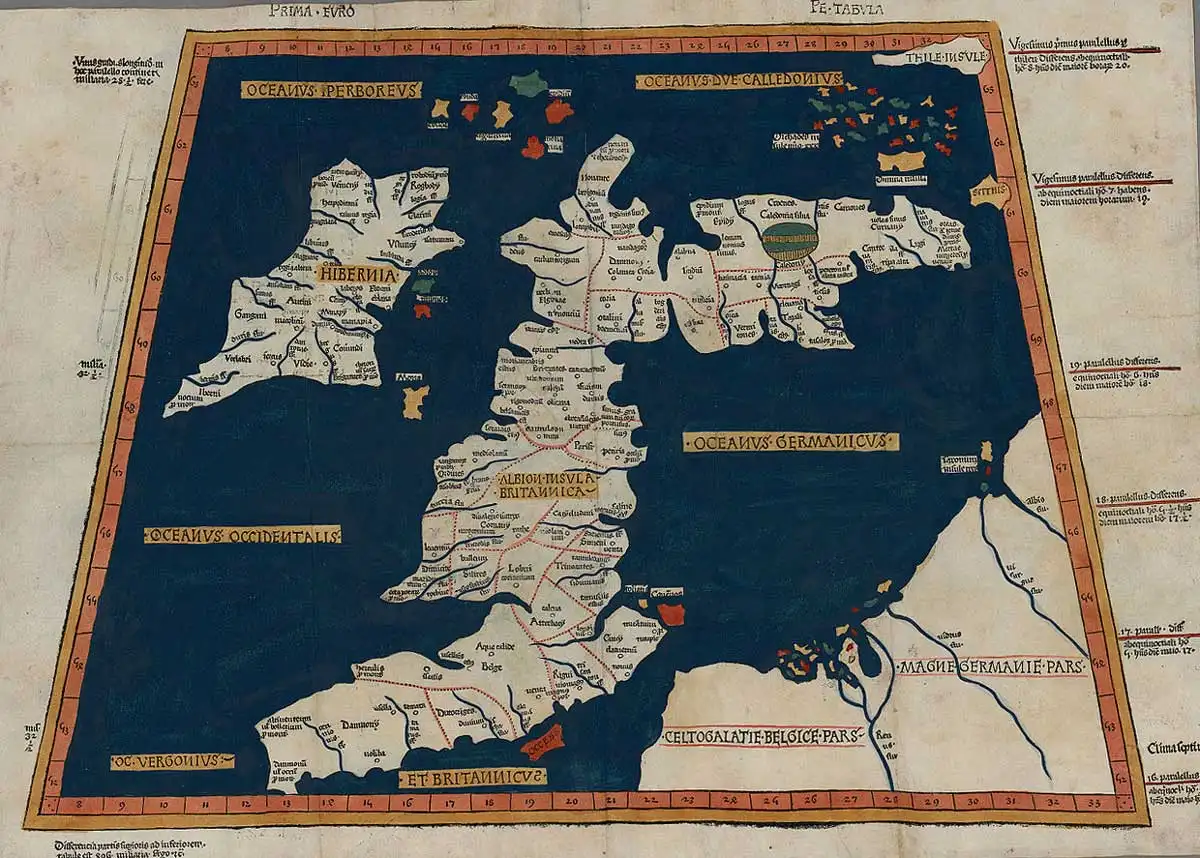Kaali crater
Thule
Thule is the name given in ancient Greek and Roman literature for the most northerly part of the world. Around 300 BC the Greek navigator Pytheas claimed to have visited Thule, six days of travel beyond Northern Britain. This may have been Iceland and in support of this idea, a paper was submitted to the 2008 Atlantis Conference in Athens by two Italian researchers, G. Giancarlo and M. Stucchi. In Germanic and Scandinavian traditions the name is applied to a long-lost continent in the North Atlantic.
>The Thule-in-Iceland theory has the support of the renowned Professor of European Archaeology, Barry Cunliffe, author of The Extraordinary Voyage of Pytheas the Greek [2081].<
The archaeologist, Rhys Carpenter, in a study of Pytheas‘ travels in the North Sea, concluded that the Shetland Islands should be identified as Thule shown on Ptolemy’s map just north of the Orkneys, He argues that “it is an unchallengeable inference that Ptolemy’s data for the location of Thule must go back to Pytheas since no one else in late antiquity ever claimed to have visited that remote region.” [221.183]
Another candidate is the Estonian island of Saaremaa(d), which is also home to the Kaali meteor craters. This meteorite “was a coarse octahedrite, with surviving fragments being only a few grams in weight. Despite the intensity of investigation both inside the craters and outside in nearby peat bogs, the actual date of the impact has been estimated at four widely spaced times: 6400 BC based on microspherules in peat (Raukas 2000); 5000 BC on similar evidence (Tiirmaa and Czegka 1996); 1740–1620 BC based on bulk sediment samples from the near the bottom of the crater lake, or a similar 1690–1510 BC date based on associated terrestrial macrofossils from the deepest part of the lake (Veskiet al. 2004); and 800–400 BC based on peat associated with impact ejecta and iridium in nearby bogs (Veski et al. 2004). Veski and his colleagues argue for the calibrated date range of around 800–400 BC, speculating that the microspherules possibly relate to a separate earlier impact event.”
Felice Vinci is a co-author (with Syusy Blady & Karl Kello) of Il meteorite iperboreo [1906]. in which the Kaali meteor is discussed along with its possible association with the ancient story of Phaeton.
In 2013 Lucio Russo located Thule on the coast of Greenland, having identified errors in Ptolemy’s geographical calculations[1060].
Marin, Minella & Schievenin in The Three Ages of Atlantis [972.375] propose that the island of Thule described by Pytheas was the legendary Hi-Brasil, which in turn they claim was part of the Porcupine Bank that they argue was only ‘recently submerged’.
A 2014 paper(b) by Cameron McPhail addressed the problem of Thule’s location. He “offers a new approach, using information supplied in the fragments of Eratosthenes’ Geography, supports assertions that Pytheas exited the Mediterranean sailing via the Strait of Gibraltar, and that Thule, the most distant locale reached, should be identified with Norway.” and concluded that “The problems of Pytheas’ route of travel cannot all be solved. The two discussed here, on account of the scant primary source information, will remain open to interpretation.“
>Support for a Norwegian Thule received a recent boost when two German investigators from the Technical University of Berlin proposed that the island of Smøla was the Thule of Pytheas. In September 2020, Smithsonian Magazine reprinted an article by F. Salazar from Hakai Magazine(f) outlining this new theory(e).<
A recent article(c) on the National Geographic website noted that “Today, historians aren’t sure if Pytheas’s remote land was based on a real location or whether it is simply a stand-in for any place. Whatever the case, it shows up in the phrase “Ultima Thule”—any extremely remote place on Earth. And the name Thule lives on in Greenland with the Thule Air Force Base; in the Sandwich Islands, one of which is South Thule; and in the name of the 69th element, thulium, discovered by a Swedish chemist.”
(b) (99+) (PDF) Pytheas of Massalia’s Route of Travel | Cameron McPhail – Academia.edu
(d) https://en.wikipedia.org/wiki/Thule
(e) This Norwegian Island Claims to Be the Fabled Land of Thule | Travel | Smithsonian Magazine*
(f) Hakai Magazine *

